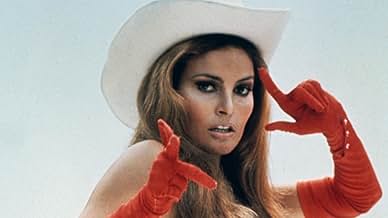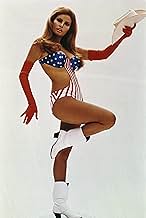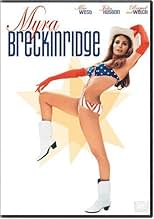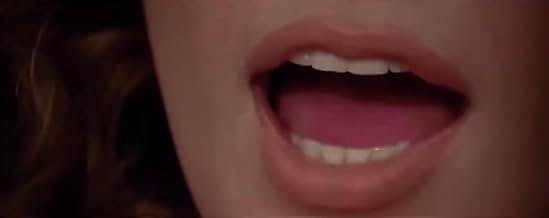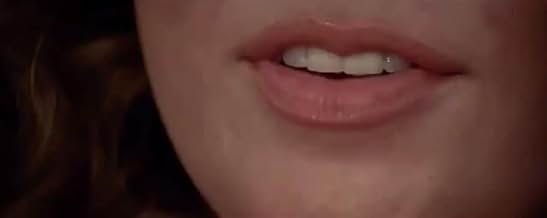IMDb रेटिंग
4.5/10
3.6 हज़ार
आपकी रेटिंग
अपनी भाषा में प्लॉट जोड़ेंAfter undergoing gender reassignment surgery, an aspiring actress travels to Hollywood, where she also wants to make a claim on her wealthy uncle's estate.After undergoing gender reassignment surgery, an aspiring actress travels to Hollywood, where she also wants to make a claim on her wealthy uncle's estate.After undergoing gender reassignment surgery, an aspiring actress travels to Hollywood, where she also wants to make a claim on her wealthy uncle's estate.
Robert P. Lieb
- Charlie Flager, Sr.
- (as Robert Lieb)
फ़ीचर्ड समीक्षाएं
MYRA BRECKINGRIDGE (4 outta 5 stars) Considering that this is historically considered one of the "worst" movies ever made, I didn't expect I was going to enjoy it... though I was curious to see how bad a train wreck it was going to be. Well, I was simply amazed at how well-done the movie actually is! To be honest, the movie is not for everyone... and I don't even know if I could actually recommend it to casual movie viewers in good conscience... but if you are a fan of truly bizarre and outrageous movies... this one is a must-see. Raquel Welch gives the best performance of her career... really! She never got many decent film roles but in this one she actually got to show that she was more than just a huge, heaving bosom. (Nonetheless, I also maintain that she probably never looked more attractive in a motion picture than she does in this one.) This movie really is a mess in certain respects but there is so much going on and most of it is so entertaining that I didn't mind the incoherence at all. The use of vintage movie clips to "comment" on what's going on in the storyline is brilliant. (The later HBO series "Dream On" also used this technique but I think this movie did it much better.) Rex Reed is perfectly cast as Myron, a gay man who decides on having a sex change (though Reed vehemently insisted throughout filming that he *wasn't* playing a gay man... uh, okay, Rex). Well, Rex turns into Raquel Welch and that's when the fun begins... he/she embarks on a quest to make men and women re-think the roles that society has imposed on them (I think that's sorta kinda supposed to be the point but it does get muddled a lot of the time). Mae West shows up for no real purpose... 76 years old and belting out her most outrageous sexual innuendos ever. (One of the recipients, a young Tom Selleck.) I never really cared much for Mae West in her prime... and was amazed how not-bad she was here! (I also am a bit reluctant to admit that I have been humming the Shirley Temple ditty that opens and closes this movie non-stop since hearing it.) John Huston probably gives one of his worst performances ever... but he's STILL worth watching... now THAT is star power! There are many classic scenes in this movie that will have you shaking your head in disbelief... could you imagine a Hollywood movie *today* that would have a buxom beauty wearing an American flag bikini, strapping on a dildo and using it on an unwilling male? I think not. Only in the 60's, baby!
When I saw 'Myra Breckinridge,' the projector broke down no less than eight times throughout the films's 94-minute duration. In most cases, this would be an inexcusable annoyance for me, but in this case, I was grateful. After every ten minute stretch of this film, I felt like I needed some respite.
The only reason to see this movie, the only thing I found remotely entertaining or funny, is to see film critic Rex Reed masturbating. Years later, Reed savaged David Lynch's 'Blue Velvet' with an angry zeal and called the movie "brain-damaged garbage" and also displayed a fragile sensitivity in denouncing the sickness of Pasolini's 'Salò.' Watching him in 'Myra Breckinridge' gives new dimensions to those reviews.
Whatever the merits of 'Valley of the Dolls,' it's a genuine camp movie because it achieves that status unintentionally. It played itself straight and failed as a drama. The intent with 'Myra Breckinridge' seemed to be, from the very start, to make the next camp classic, and so the film has no dramatic level on which to fail. It cuts straight to the camp and does it horribly.
The only reason to see this movie, the only thing I found remotely entertaining or funny, is to see film critic Rex Reed masturbating. Years later, Reed savaged David Lynch's 'Blue Velvet' with an angry zeal and called the movie "brain-damaged garbage" and also displayed a fragile sensitivity in denouncing the sickness of Pasolini's 'Salò.' Watching him in 'Myra Breckinridge' gives new dimensions to those reviews.
Whatever the merits of 'Valley of the Dolls,' it's a genuine camp movie because it achieves that status unintentionally. It played itself straight and failed as a drama. The intent with 'Myra Breckinridge' seemed to be, from the very start, to make the next camp classic, and so the film has no dramatic level on which to fail. It cuts straight to the camp and does it horribly.
The widow of a gay movie critic hopes to collect on her husband's inheritance, which includes a drama school in Hollywood run by her in-law, Buck Loner, a faded cowboy star. Despite 20th Century-Fox keeping this thing under-wraps for years, the notorious "Myra Breckinridge" is finally beginning to get the recognition it deserves. This Hollywood satire is indeed a misfire, but it isn't a boring one. Based on Gore Vidal's acidic book, it's an amusingly trashy, wicked and low-down look at Hollywood's loss of morals; it isn't meant to be high-brow, and Raquel Welch is ballsy and bitchy as the gal who takes on Tinsel Town. Rex Reed is her alter-ego, John Huston is perfect as Uncle Buck, Mae West is dazed but ribald as a man-hungry talent agent, and Farrah Fawcett is a sweetly stoned ingénue. Vidal (who penned one of the first screenplay drafts himself before being kicked off the project) chastised the picture but, despite some choppy editing and an uncertain direction, it's a movie perfectly in-tune with the source material. After some 30 years, the times have finally caught up with "Myra Breckinridge". **1/2 from ****
The book "Myra Breckinridge" is marvelous, and so is its nutty sequel "Myron" (which takes place on the set during the making of the Maria Montez movie "Siren of Atlantis" and, in its original published version, is a diatribe against censorship and finds new ways to use the name Rehnquist). The movie, a big flop in 1970, is not marvelous, but starts intriguingly and still has an aura of the forbidden about it (it was rated X; in 1970 that wasn't a liability, it could be a marketing scheme). The Fox Movie Channel showed the film recently in widescreen and I watched it (the latest in several viewings ) and I failed to notice exactly when it begins to unravel.
In spite of its ultimately depressing and sleazy tone, the movie does have some lovely things in it: the winking girl who pops up in various scenes throughout, Raquel Welch's game, amusing performance, an intriguing visual style, the usage of old movie clips to comment on the action in a meta-cinematic manner (my favorite is the brief glimpse of Marilyn Monroe in the unfinished "Something's Got To Give," a glimpse that could have been furthered), a bizarre underused supporting cast of excellent Old Hollywood character actors (Jim Backus, Kathleen Freeman, Grady Sutton, Andy Devine, John Carradine, etc.) and a short appearance by Genevieve Waite, the star of the director's previous, and only, hit film "Joanna." Waite is also the mother of Bijou Phillips and the ex-wife of John Phillips, of The Mamas and The Papas. (John Phillips wrote the song "A Secret Place" that was used in the film.) I wish I could have been a fly on the wall when the movie was being made. Rex Reed, one of the stars in the film, WAS a fly on the wall and wrote about the fiasco in Playboy magazine. Then he went on The Mike Douglas Show and gave out his Christmas list. To everyone who saw the movie "Myra Breckinridge" he gave a case of amnesia.
I agree with another comment here that the movie has finally caught up with its audience, but only if you know a little something about Old Hollywood and really love cinema.
In spite of its ultimately depressing and sleazy tone, the movie does have some lovely things in it: the winking girl who pops up in various scenes throughout, Raquel Welch's game, amusing performance, an intriguing visual style, the usage of old movie clips to comment on the action in a meta-cinematic manner (my favorite is the brief glimpse of Marilyn Monroe in the unfinished "Something's Got To Give," a glimpse that could have been furthered), a bizarre underused supporting cast of excellent Old Hollywood character actors (Jim Backus, Kathleen Freeman, Grady Sutton, Andy Devine, John Carradine, etc.) and a short appearance by Genevieve Waite, the star of the director's previous, and only, hit film "Joanna." Waite is also the mother of Bijou Phillips and the ex-wife of John Phillips, of The Mamas and The Papas. (John Phillips wrote the song "A Secret Place" that was used in the film.) I wish I could have been a fly on the wall when the movie was being made. Rex Reed, one of the stars in the film, WAS a fly on the wall and wrote about the fiasco in Playboy magazine. Then he went on The Mike Douglas Show and gave out his Christmas list. To everyone who saw the movie "Myra Breckinridge" he gave a case of amnesia.
I agree with another comment here that the movie has finally caught up with its audience, but only if you know a little something about Old Hollywood and really love cinema.
Seldom seen since theatrical release in 1970, MYRA BRECKINRIDGE has become a byword for cinematic debacles of legendary proportions. Now at last on DVD in an unexpectedly handsome package, it is as unlikely to win wide audiences today as it was when first released.
Gore Vidal's 1968 bestseller was a darkly satirical statement. Most filmmakers felt that the novel's story, structure, and overall tone would not translate to film, and industry insiders were surprised when 20th Century Fox not only acquired the rights but also hired Vidal to adapt his novel to the screen. But studio executives soon had cold feet: Vidal's adaptations were repeatedly rejected and novice writer-director Michael Sarne was brought in to bring the film to the screen.
Studio executives hoped that Sarne would tap into the youth market they saw as a target for the film, but Sarne proved even more out of synch with the material than the executives themselves. Rewrite upon rewrite followed. The cast, sensing disaster, became increasingly combative. In her DVD commentary, star Raquel Welch says that she seldom had any idea of what Myra's motives were from scene to scene or even within any single scene itself, and that each person involved seemed to be making an entirely different film. In the accompanying "Back Story" documentary, Rex Reed says that MYRA BRECKINRIDGE was a film made by a bunch of people who hid in their dressing rooms while waiting for their lawyers to return their calls.
The accuracy of these comments are demonstrated by the film itself. The basics of Vidal's story are there, but not only has the story been shorn of all broader implications, it seems to have no point in and of itself. Everything runs off in multiple directions, nothing connects, and numerous scenes undercut whatever logic previous scenes might have had. And while director Sarne repeatedly states in his commentary that he wanted to make the film as pure farce, the only laughs generated are accidental.
Chief among these accidents is Mae West. It is true that West is unexpectedly well preserved in appearance and that she had lost none of her way with a one-liner--but there is no getting around the fact that she is in her seventies, and her conviction that she is the still the sexiest trick in shoe leather is extremely unsettling, to say the least. But worse, really, is the fact that West is outside her era. Her efforts to translate herself into a hip and happening persona results in one of the most embarrassing self-caricatures ever seen on film.
The remaining cast is largely wasted. Raquel Welch, a significantly underestimated actress, plays the title role of Myra very much like a Barbie doll on steroids; non-actor Rex Reed is unexpectedly effective in the role of Myron, but the entire role is essentially without point. Only John Huston and cameo players John Carradine, Jim Backus, William Hopper, and Andy Devine emerge relatively unscathed. Yes, it really is the debacle everyone involved in the film feared it would be: fast when it should be slow, slow when it should be fast, relentlessly unfunny from start to finish. It is true that director Sarne does have the occasional inspired idea--as in his use of film clips of everyone from Shirley Temple to Judy Garland to create counterpoint to the action--but by and large, whenever Sarne was presented with a choice of how to do something he seems to have made the wrong one.
The how and why of that is made clear in Sarne's audio commentary. Sarne did not like the novel or, for that matter, the subject matter in general. He did not want to write the screenplay, but he needed the money; he emphatically did not want to direct the film, but he need the money. He makes it very clear that he disliked author Gore Vidal and Rex Reed (at one point he flatly states that Reed "is not a nice person"), and to this day he considers that Vidal and Reed worked in tandem to sabotage the film because he refused to play into their 'homosexual agenda'--which, when you come right down to it, seems to have been their desire that Sarne actually film Vidal's novel rather than his own weirdly imagined take-off on it.
Although he spends a fair amount of commentary time stating that the film is widely liked by the gay community, Sarne never quite seems to understand that the appeal of the film for a gay audience arises from his ridiculously inaccurate depiction of homosexual people. When taken in tandem with the film itself, Sarne emerges as more than a little homophobic--and quite frankly the single worst choice of writers and directors that could have been made for this project.
In addition to the Sarne and Welch commentaries and the making-of documentary, the DVD release includes several trailers and two versions of the film: a "theatrical release" version and a "restored" version. The only difference between the two is that the final scene in the "restored" version has been printed to black and white. The edits made before the film went into general release have not been restored, but the documentary details what they were. The widescreen transfers of both are remarkably good and the sound is quite fine. But to end where I began, this is indeed a film that will most interest film historians, movie buffs, and cult movie fans. I give it three out of five stars for their sake alone, but everyone else should pass it by.
Gary F. Taylor, aka GFT, Amazon Reviewer
Gore Vidal's 1968 bestseller was a darkly satirical statement. Most filmmakers felt that the novel's story, structure, and overall tone would not translate to film, and industry insiders were surprised when 20th Century Fox not only acquired the rights but also hired Vidal to adapt his novel to the screen. But studio executives soon had cold feet: Vidal's adaptations were repeatedly rejected and novice writer-director Michael Sarne was brought in to bring the film to the screen.
Studio executives hoped that Sarne would tap into the youth market they saw as a target for the film, but Sarne proved even more out of synch with the material than the executives themselves. Rewrite upon rewrite followed. The cast, sensing disaster, became increasingly combative. In her DVD commentary, star Raquel Welch says that she seldom had any idea of what Myra's motives were from scene to scene or even within any single scene itself, and that each person involved seemed to be making an entirely different film. In the accompanying "Back Story" documentary, Rex Reed says that MYRA BRECKINRIDGE was a film made by a bunch of people who hid in their dressing rooms while waiting for their lawyers to return their calls.
The accuracy of these comments are demonstrated by the film itself. The basics of Vidal's story are there, but not only has the story been shorn of all broader implications, it seems to have no point in and of itself. Everything runs off in multiple directions, nothing connects, and numerous scenes undercut whatever logic previous scenes might have had. And while director Sarne repeatedly states in his commentary that he wanted to make the film as pure farce, the only laughs generated are accidental.
Chief among these accidents is Mae West. It is true that West is unexpectedly well preserved in appearance and that she had lost none of her way with a one-liner--but there is no getting around the fact that she is in her seventies, and her conviction that she is the still the sexiest trick in shoe leather is extremely unsettling, to say the least. But worse, really, is the fact that West is outside her era. Her efforts to translate herself into a hip and happening persona results in one of the most embarrassing self-caricatures ever seen on film.
The remaining cast is largely wasted. Raquel Welch, a significantly underestimated actress, plays the title role of Myra very much like a Barbie doll on steroids; non-actor Rex Reed is unexpectedly effective in the role of Myron, but the entire role is essentially without point. Only John Huston and cameo players John Carradine, Jim Backus, William Hopper, and Andy Devine emerge relatively unscathed. Yes, it really is the debacle everyone involved in the film feared it would be: fast when it should be slow, slow when it should be fast, relentlessly unfunny from start to finish. It is true that director Sarne does have the occasional inspired idea--as in his use of film clips of everyone from Shirley Temple to Judy Garland to create counterpoint to the action--but by and large, whenever Sarne was presented with a choice of how to do something he seems to have made the wrong one.
The how and why of that is made clear in Sarne's audio commentary. Sarne did not like the novel or, for that matter, the subject matter in general. He did not want to write the screenplay, but he needed the money; he emphatically did not want to direct the film, but he need the money. He makes it very clear that he disliked author Gore Vidal and Rex Reed (at one point he flatly states that Reed "is not a nice person"), and to this day he considers that Vidal and Reed worked in tandem to sabotage the film because he refused to play into their 'homosexual agenda'--which, when you come right down to it, seems to have been their desire that Sarne actually film Vidal's novel rather than his own weirdly imagined take-off on it.
Although he spends a fair amount of commentary time stating that the film is widely liked by the gay community, Sarne never quite seems to understand that the appeal of the film for a gay audience arises from his ridiculously inaccurate depiction of homosexual people. When taken in tandem with the film itself, Sarne emerges as more than a little homophobic--and quite frankly the single worst choice of writers and directors that could have been made for this project.
In addition to the Sarne and Welch commentaries and the making-of documentary, the DVD release includes several trailers and two versions of the film: a "theatrical release" version and a "restored" version. The only difference between the two is that the final scene in the "restored" version has been printed to black and white. The edits made before the film went into general release have not been restored, but the documentary details what they were. The widescreen transfers of both are remarkably good and the sound is quite fine. But to end where I began, this is indeed a film that will most interest film historians, movie buffs, and cult movie fans. I give it three out of five stars for their sake alone, but everyone else should pass it by.
Gary F. Taylor, aka GFT, Amazon Reviewer
क्या आपको पता है
- ट्रिवियाIt was Lee Majors who got then-girlfriend Farrah Fawcett involved in this movie. He was sought for the role of Rusty but turned it down. However, he did introduce the producers to Fawcett, who had done several television commercials by that time, and she was hired to play Mary Ann. She later told Rona Barrett, "It was a terrible picture. But it taught me a lot about egos and star-trips. Everyone was on that!"
- गूफ़Apparently pieced together from different takes, Myra's blouse collar alternately appears fully outside, partially inside/outside and fully outside her jacket while she "depantses" Rusty in her office.
- इसके अलावा अन्य वर्जनOriginally rated "X" when released in 1970. In 1978 the film edited to be re-rated "R".
- कनेक्शनEdited from Dante's Inferno (1935)
- साउंडट्रैकSecret Place
Music by John Phillips
Lyrics by John Phillips
Sung by Rex Reed (uncredited)
[Also sung by off-screen vocal group]
टॉप पसंद
रेटिंग देने के लिए साइन-इन करें और वैयक्तिकृत सुझावों के लिए वॉचलिस्ट करें
- How long is Myra Breckinridge?Alexa द्वारा संचालित
विवरण
- रिलीज़ की तारीख़
- कंट्री ऑफ़ ओरिजिन
- भाषाएं
- इस रूप में भी जाना जाता है
- Gore Vidal's Myra Breckinridge
- फ़िल्माने की जगहें
- 6914 Hollywood Boulevard, हॉलीवुड, लॉस एंजेल्स, कैलिफोर्निया, संयुक्त राज्य अमेरिका(Myron and Myra dancing on the street, Ann Miller's star on the Hollywood Walk of Fame)
- उत्पादन कंपनी
- IMDbPro पर और कंपनी क्रेडिट देखें
बॉक्स ऑफ़िस
- बजट
- $53,85,000(अनुमानित)
- चलने की अवधि1 घंटा 34 मिनट
- रंग
- पक्ष अनुपात
- 2.35 : 1
इस पेज में योगदान दें
किसी बदलाव का सुझाव दें या अनुपलब्ध कॉन्टेंट जोड़ें



